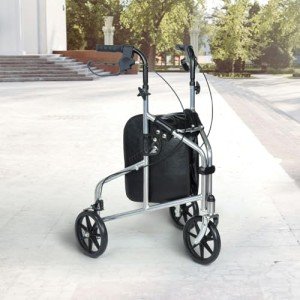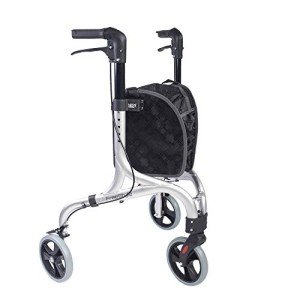As the population ages, the need for mobility aids like rollator walkers has actually surged. These walkers offer stability, support, and liberty of movement for individuals dealing with mobility issues, be they short-term or persistent. Understanding the kinds of rollator walkers offered, their benefits, features, and how to pick the ideal one can substantially enhance the quality of life for both the user and their caretakers.
A rollator walker is a mobility aid developed to help individuals maintain their self-reliance while walking. It features a frame with 4 wheels, hand brakes, and a seat, making it appropriate for users requiring additional assistance without the complete limitations of traditional walkers.

Rollator walkers come equipped with various features created to enhance user experience. Here are a few of the most typical functions:
Rollator walkers use numerous benefits. They can considerably enhance mobility and safety for users. Here are some essential benefits:
Rollator walkers are available in different styles and variations to fulfill private requirements. Here are a few common types:
| Type | Description |
|---|---|
| Standard Rollator | Fundamental four-wheeled design developed for indoor and outdoor use. |
| Junior Rollator | A smaller sized variation tailored for shorter individuals or children. |
| Heavy-Duty Rollator | Built to accommodate bigger body weights and provide additional stability. |
| Three-Wheel Rollator | Compact style perfect for browsing tight spaces. |
| Rollator with Seat | Features an integrated seat for resting throughout use. |
| Rollator with Storage | Includes removable baskets or pouches for simple transport of personal products. |
Choosing the right rollator walker involves considering user requirements, preferences, and physical requirements. Here are some aspects to consider:

Appropriate maintenance can enhance the life expectancy of a rollator walker. Here are some suggestions for keeping it in great condition:
Q1: What is the typical weight limitation for a rollator walker?A: Most standard rollator walkers support weights in between 250 to 300 pounds, while heavy-duty models can accommodate as much as 500 pounds. Q2: Can rollator walkers be utilized outdoors?A: Yes, lots of rollatorsare developed for outdoor use. Those with to 5 years on the frame and parts, guaranteeing durability and user fulfillment. Q4: How do I properly adjust a rollator walker?A: Adjust the handles to a height that enables the user to stand upright with elbows slightly bent when holding the handles. Q5: Can after injuries or surgical treatments. Rollator walkers walkers, users can make educated decisions that best fit their lifestyle and requirements. Whether recuperating from an injury or handling a long-term condition, a rollator walker can make a considerable difference in the quality of life, permitting individuals to regain their liberty and self-confidence while moving about the world.
larger wheels and robust frames are particularly matched for uneven surface areas. Q3: Do rollator walkers include warranties?A: Many manufacturers supply guarantees ranging from 1
I use a rollator walker for rehabilitation?A: Yes, rollators are typically used in rehab settings to enhance walking confidence and mobility
are indispensable tools that offer improved mobility and self-reliance for lots of individuals. By comprehending the types, benefits, and appropriate usage of rollator
No Data Found!

